I was loading my baking pan the other day and thought that there may be some fairly new clayers out there that might be helped by seeing how I bake my clay. The following video involves a standard oven and a toaster oven. I have never baked my clay in a convection oven, but I know many clayers do. If you want information about convection ovens, you’ll have to do a search. Don’t worry there is lots of information out there.
In the film I mention several colors of clay that tend to burn and what I do to prevent that happening. I failed to mention translucent clay, so mentally add that to the list while you are watching.
Just to remind you, don’t forget to use your timer, you do not, seriously do not, want to burn the clay. Trust me, I know from experience. Don’t forget to use a tile, it helps to distribute the heat.
Be sure and check out my other videos. Enjoy!



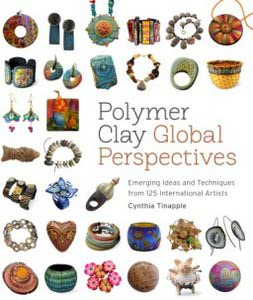
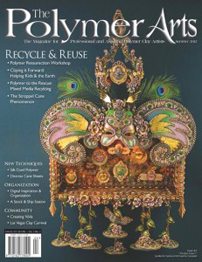
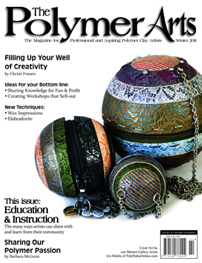
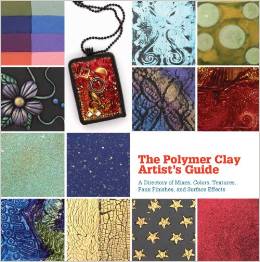
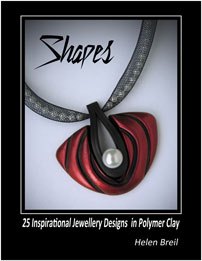

Thank you for sharing so much information with us. I am learning more and more from you website. Keep up the great work. Looking forward to your face cane video.
You’re welcome Carter, I’m glad to share what I’ve learned.
Excellent Iniformational Video, once again it pleases me to know of you and your wonderful work, and teaching.
Thanks for everything you do Alice.
See you around the City!
~Hugs~
Andrea
Andrea, thanks for stopping by and watching the video. I’m just passing it on. I’ll be here and there.
Hey my friend! I loved this video! I learned quite a bit from it and you look great in that colour by the way. It’s always so nice to hear your voice when I usually ‘see’ it.
Email me – time to catch up.
I’m glad you liked it Aimee. I need to get busy on some more videos, just can’t seem to find a block of time.
Great instructional video~I have never seen anyone tent the clay before and I’m going to try that;)
Christine, at this point, it is my insurance policy. Doesn’t cost very much and saves lots of heartache.
Hi Alice – I was all set to watch the video and…something is wrong. 🙁 Right after you say your name the video begins making a skipping noise – and doesn’t stop. I wanted to give you a heads up – I really want to watch it. Is it me…or the video? (The first 5 or so seconds look great!) xx
Hi Katherine,
It plays fine for me, anyone else out there having a problem? Not sure what could be causing it.
Nothing wrong with the video…I just wanted to thank you for the information you have on this site. It’s the most helpful I’ve found! I have begun making my own bracelets with blanks and I wouldn’t have known how to attach the clay after baking. Thanks so much 🙂
You are so welcome Tonya, glad to help.
Hi Alice,
I Love,love,love your videos thanks so much for making them. My problem is that I currently use a very popular brand of clay to make my bracelets from your pen and ink tute, but when I use the black clay to glue it to the blank the black breaks, what brand of clay did you use and have you ever had any trouble with your clay breaking?
Thanks again for sharing your kinowledge.
Judy
Judy, thanks so much for letting me know you enjoyed my videos. I have always used Premo. Sculpey III does not stretch at all so if you’re using Sculpey, youshould consider switching to Premo, or one of the other brands….
Alice–Thank you for the good tip about using aluminum foil. I have burned more than one translucent clay item! Someone’s book (Ronna Sarvas Weltman?) recommended putting clay fresh (and hot) out of the oven in ice water to maximize strength. Of course, it wouldn’t be a good idea if you were covering glass. Do you have any thoughts about this? Have you heard of it? Thanks again–Susan
Susan, I’ve tried throwing my work cold water, but how can you be sure it’s stronger? I usually do it because I want to work with it right away. lol But I know it doesn’t hurt the piece and maybe the ones that do that know something I don’t. Glad you enjoyed the video.
Спасибо Вам большое за уроки!!! С удовольствием рассматриваю Ваши украшения и мне они дают простор для фантазии.)))
Не за что, я хотел бы говорить на русском, чтобы вы могли лучше понять его. Но фотографии стоит тысячи слов. Спасибо, что нашли время, чтобы сказать привет.
hello alice i like all your work i got a question how i take my fingerprint from the clay.after i cook it i could see my fingerprint..thank you…for your help.
Hi Mayda,
You should try to get as many fingerprints off your raw clay before you bake it. Afterward, you will need to sand it. I don’t like to sand, so I send a lot of time being carelful not have fingerprint.
How do you get good results when baking / curing the clay? My Super Sculpey, is breaking! very easy!
I’m using Super Sculpey firm and Super Sculpey living doll
Make sure your clay is mixed well Adrian. But most important make sure you are baking at the correct temperature and the correct time for the thickness of your clay. If it is under baked, it will crack for sure.
I do human sculptures with about 16 cm (height). I bake in a conventional oven at 130 degrees Celsius for 30 minutes. Is it good?
And this clay, This is not an issue of Super Sculpey? Do you recommend this clay? It’s good, right?
Thanks, Alice!
Ah,
How do I calculate the correct time to be bake in the oven? A doll of 16cm (height) more or less.
It’s very confusing that:
Super Sculpey website, “for 15 minutes per 1/4 in. (6 mm) thickness.”
A doll, sculpture, has many different shapes and thicknesses as well. How do I calculate the exact time?
Thanks Alice!!!!
I use Super Sculpey all the time. You If you’re baking at the correct temp. it will not burn but it will scorch. So what I do is cover it with foil as in the video or…new techinque that I use is to cover everything with polyfil so that nothing is exposed to direct heat.
Then leave your piece in the oven after you turn it off until the oven is cool.
ow do I calculate the correct time to be bake in the oven? A doll of 16cm (height) more or less.
It’s very confusing that:
Super Sculpey website, “for 15 minutes per 1/4 in. (6 mm) thickness.”
A doll, sculpture, has many different shapes and thicknesses as well. How do I calculate the exact time?
Thanks Alice!!!!
use the thickest part as your guide and protect the whole piece so the thinner parts don’t scorch.
Some people cover their pieces in corn starch. Try a scrap piece. Make it thick and thin. See what happens on a scrap not your finished piece.
Hi Alice,
I am covering tin boxes with sheets of polymer clay and no matter how careful I am or how good it looks before I bake it, I still have bubbles. I am using the 2nd widest setting on my polymer clay machine. I also covered a dropper bottle and had the same thing happen. Can you tell me why this is happening. Any suggestions would be greatly appreciated.
Susan
Hi Susan,the only suggestion I have is to try covering any surface with white craft glue first, let dry, then cover with pc. It gives the surface an even “tooth”.
Oh and don’t over work the clay, folding rolling into a wad then rolling out again puts air into the clay.